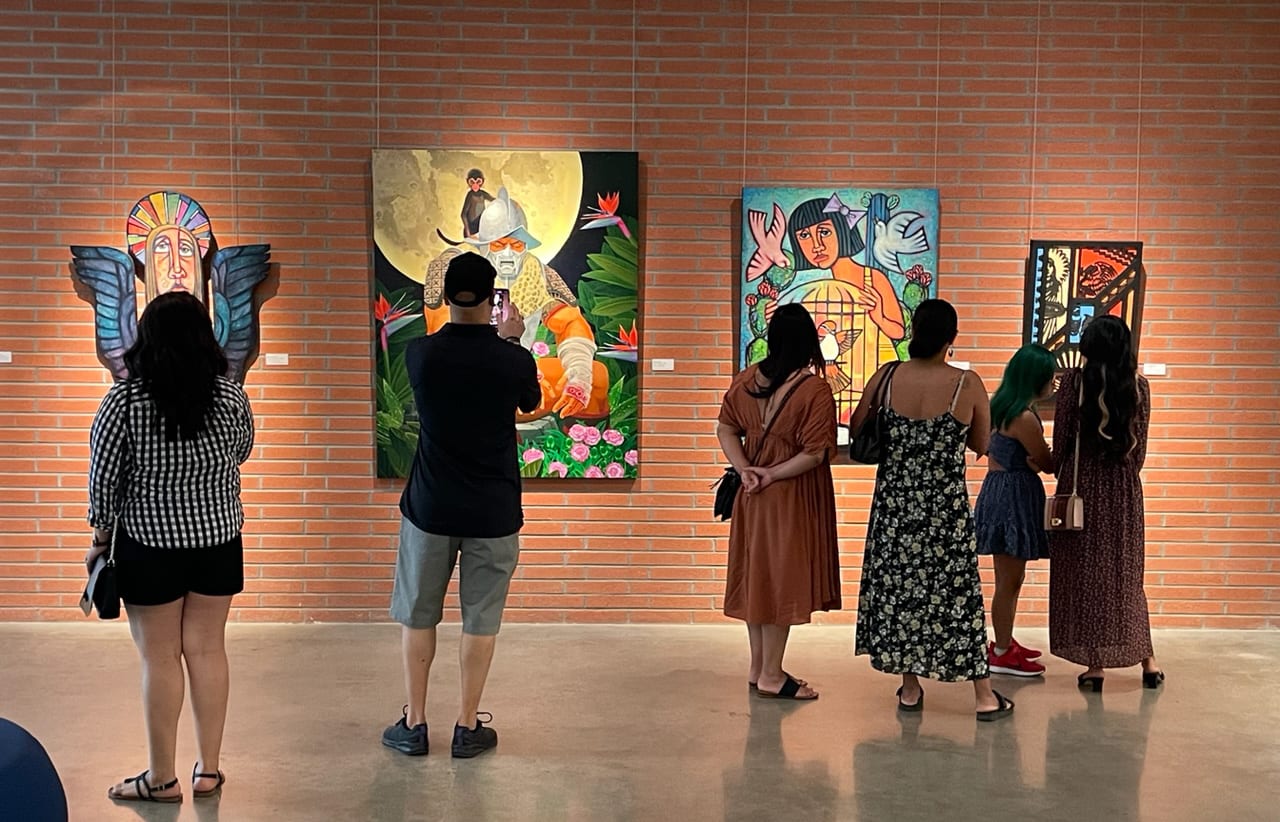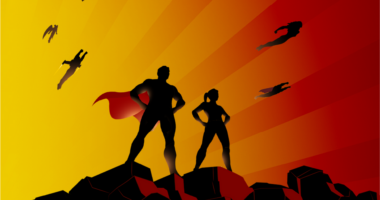
RIVERSIDE, Calif. — A young woman with a ponytail leaned in to take a closer look at “Dreamers,” an oil painting by Rosy Cortez. “Oh, that’s interesting,” the woman mused to her companion. Nearby, a group of senior citizens gazed at a multilevel installation featuring the Aztec earth goddess Coatlicue. “It’s fantastic!” one senior exclaimed.
These visitors were taking in the artwork at the Cheech Marin Center for Chicano Art & Culture, known as “The Cheech.”
Marin, a comedian, actor and activist, Marin has been learning about art since he was an 11-year-old looking at books at the library. A collector of Chicano art since the 1980s, he’s exhibited his collection in over 50 museums across the country. Now the star of TV’s “Nash Bridges” and several Cheech and Chong movies has gifted approximately 500 works by Chicano artists to the Riverside Art Museum, which has provided the paintings, drawings, sculptures and photographs with a permanent home.
“This is the most positive thing I’ve ever been involved in, in my whole career,” Marin said in an interview with NBC News.
Marin hopes that the museum, a public-private partnership with the Riverside Art Museum and the City of Riverside, will introduce more people to Chicano art. He is especially proud that the new museum is in Riverside, a community about 50 miles east of downtown Los Angeles that is 53% Latino. Many visitors to the museum, Marin said, have “never been in any museum before, anywhere.”
Chicano art can encompass imagery that may be familiar to Mexican Americans and others, such as representations of the Virgin of Guadalupe, Lotería cards or lowrider culture. It can also be provocative, sophisticated and surprising. “Really, all you have to do is see it,” Marin said. “There’s no great mystery or story that goes with it. All you have to do is look at the art.”
The Cheech opened this summer, an event The New York Times described as “a game changer for Chicano art.”
Once known for his comedy routines and movies, Marin is embracing his role as an expert and curator of Chicano art. In 2021, ARTnews recognized him on their list of the “Top 200” collectors in the world, alongside such notables as Jeff Bezos and David Geffen.
Art beyond what was ‘put in a box’
“Chicano” is a term associated with the Mexican American civil rights movement of the late 1960s and early ’70s. It was organized around issues like fair wages for farm workers, self-determination and cultural representation in public schools. Today, some Mexican Americans identify as Chicano, while others do not.
Marin said that Chicano art is not necessarily political. “It started out in the political movement. It was the graphic images of that whole movement that was happening with the farmworkers and Cesar Chavez and (playwright) Luis Valdez … as artists entered that arena, their work was like news from the front.” The artists, Marin explained, were telling the world about their lives and their struggles, often through murals and silk-screened posters.
Since then, Chicano art has continued to evolve. To Marin, it reveals el sabor, or the flavor, of the community.
Many Chicano artists have long been overlooked by traditional institutions, Marin said. “These artists are really great, and why aren’t they getting any shelf space? So that became my goal when I started collecting, and now we’re part of a vast wave across the nation.”
“Cheech’s collection has brought unprecedented attention to Chicano art,” said María Esther Fernández, artistic director of The Cheech. “That’s what has been at the core of his collecting; he recognizes the importance of these works, and he believes in Chicano art as an important American art movement.”
According to Fernández, after the civil rights era of the late 1960s and ’70s, known as el movimiento among Chicanos, Chicano art became defined as the movement’s visual manifestation. “But then, Chicano art was put in a box. The mainstream art world saw Chicano art only as cultural affirmation or representation.”
Fernández doesn’t think that the contributions made by Chicano artists have been fully acknowledged by the broader art world. “At many mainstream institutions, there has been a neglect of Chicano artists, and curators don’t know what to do with their art, besides sporadic exhibitions.”
In 2019, a survey found that white male artists dominated the collections in major U.S. art museums; 85% of artists featured in permanent collections were white and 87% were men. Latinos made up 2.6% of such artists, while the figure for Latina artists was below 1%.
However, there is a slow trend toward more diversity and inclusion in the art world. The Smithsonian’s planned National Museum of the American Latino in Washington came about, in part, because of criticism of the Smithsonian Institution’s history of “willful neglect” of Latinos.
“One of the great things about The Cheech is that it highlights an individual’s collection and brings a lot of works together that are rarely shown in one place,” said Jennifer A. González, a professor of the history of art and visual culture at the University of California, Santa Cruz. “You can see a variety and depth in his collection that is hard to find in other institutions.”
“A benefit of the collection is that it draws attention to U.S. artists who are part of the tradition called Chicano and Chicana art,” said González.
The general population is often uninformed — but not intentionally — about the differences between Latino, Mexican American and Mexican communities, said González. There are other museums focusing on Latin American and Latino Art, such as El Museo del Barrio in New York City and the National Museum of Mexican Art in Chicago, she pointed out, but The Cheech is uniquely focused on U.S. Latino artists.
In addition to its permanent collection, the Cheech Museum is currently showing an exhibition by the De La Torre Brothers through January.
Einar De La Torre, one half of the artistic duo, has been pleased by the response so far to what the museum bills as a “Retro-Perspective” of their work. “In general, I love that the Latino people visiting seem to be really happy to be represented, like they are consuming art in a way they have not before.”
“We are very proud to be part of a new museum that hopefully will be a harbinger of diversity,” De La Torre said.
Years ago, Marin reflected, he never could have imagined himself becoming such an art patron, let alone the founder of a museum. “It’s been an unbelievable process. And I am a firm believer that if you do good things, good things will come to you.”
“I’m really grateful; I have come to the point of view that it was meant to be,” he added. “And the least (I) can do is stay out of the way, and don’t mess it up, and it will go forward.”
Follow NBC Latino on Facebook, Twitter and Instagram.
Source: | This article originally belongs to Nbcnews.com










